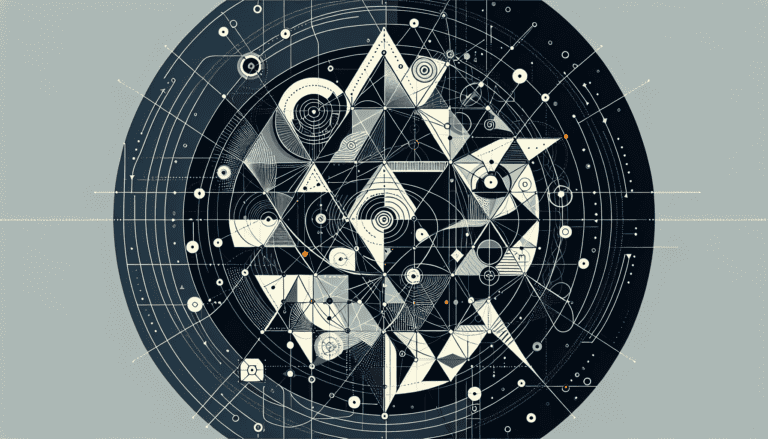Cracking the Trading Code: Understanding Doji Candlestick Patterns

Introduction to Doji Candlesticks
Doji candlesticks are a fascinating aspect of technical analysis, providing traders with insight into market sentiment. Intended for those venturing into the world of trading, this section will break down the concept behind doji candlesticks and the types that traders might encounter.
Decoding the Doji
A doji candlestick pattern occurs on a price chart when an asset’s opening and closing prices are virtually identical. These patterns are often recognized by their distinct ‘cross’ or ‘plus’ shape and are indicative of a market at a standstill, representing an equilibrium between buyers and sellers (Investopedia).
Interpreting doji candlestick patterns for market direction is not straightforward and requires an understanding of the context in which they occur. A single doji can signal a pause in the trend, a potential reversal, or a continuation. It’s the subtleties in shape and position relative to the overall trend that give traders clues about impending price moves.
Types of Doji Patterns
Doji candlestick patterns come in various forms, each providing different insights into market behavior. Here is a summary of common doji types, their features, and what they may signify:
| Pattern | Description | Potential Signal |
|---|---|---|
| Standard Doji | A classic doji with a small body, signifying indecision. | Market at equilibrium |
| Gravestone Doji | A doji with a long upper shadow, resembling a tombstone. | Potential bearish reversal |
| Dragonfly Doji | A doji with a long lower shadow, resembling a dragonfly. | Potential bullish reversal |
| Long-Legged Doji | A doji with both a long upper and lower shadow. | Extreme indecision |
| Four-Price Doji | Open, close, high, and low are all the same. | Extreme rarity; complete indecision |
| Neutral Doji | Similar upper and lower shadows, with a small body. | Balance between buyers and sellers |
These patterns are a visual representation of the tug-of-war between bulls and bears and can be powerful indicators when found at the tops or bottoms of trends or within price consolidation phases. The gravestone and dragonfly doji, for instance, suggest shifts in momentum and are often scrutinized by traders for hints of potential trend reversals (Investopedia).
For those just starting, it’s crucial to pair the observation of doji patterns with other technical indicators and chart patterns to gain a well-rounded view of the market. Interpreting doji candlestick patterns with the aid of trend lines or volume analysis can greatly enhance the accuracy of your trading decisions.
In the next sections, we will delve deeper into how doji patterns can be interpreted and implemented in trading strategies. Whether it’s spotting a trend reversal with a doji or using it in combination with the Ichimoku Cloud, understanding these patterns is a skill that can greatly benefit any trader’s arsenal.
Interpreting Market Indecision
Doji candlestick patterns are pivotal components of technical analysis, offering insights into market sentiment and potential shifts in trend direction. They are particularly scrutinized by traders for signs of market indecision.
Doji as Reversal Signals
Doji patterns are often seen as indicators signaling a possible reversal in market direction. The open and close prices of a doji are virtually identical, or at least very close to each other, reflecting a state of equilibrium between buyers and sellers (DailyFX). This equilibrium suggests that the prevailing momentum of the market may be waning.
When a doji appears at the peak or trough of a trend, it can suggest that the dominant sentiment that has been driving the trend is starting to diminish, which might result in a reversal (Investopedia). For instance, a doji that emerges following a series of bullish candlesticks with large bodies could indicate that buying pressure is diminishing, pointing to a potential downward reversal, whereas a doji after strong bearish candles might suggest a weakening of selling pressure and an upward reversal.
Contextualizing Doji with Trends
The significance of a doji pattern is greatly enhanced when it is observed in conjunction with the prevailing trend. A single doji can hint at indecision, but the strength of this signal is amplified when it occurs after a trend of consistent movement in one direction. For example, a doji that follows an uptrend might signal that the buying pressure is plateauing and a downtrend could be on the horizon, whereas a doji after a downtrend may indicate that selling pressure is abating and an uptrend could ensue.
It is crucial to consider the doji within the broader context of market trends and to use additional technical analysis tools to confirm any predictions about market direction. For instance, traders may look at support and resistance levels, volume analysis techniques, or trendlines to corroborate the signals indicated by doji patterns (Liberated Stock Trader). Furthermore, the reliability of a doji as a signal for market direction can be increased by waiting for subsequent candlestick patterns to confirm or refute the potential reversal (Forex.com).
For those new to trading, understanding the nuances of doji candlestick patterns is critical for interpreting market direction. Traders should be cautious and avoid relying solely on doji patterns; instead, they should integrate these signals with other analysis tools and indicators, such as the MACD crossover or Ichimoku Cloud, to make well-informed trading decisions.
Analyzing Doji Variations
In the realm of technical analysis, doji candlestick patterns serve as vital indicators for traders attempting to decipher market sentiment. These patterns, particularly variations like the gravestone and dragonfly doji, can offer clues about potential reversals in the market. Understanding these variations can be instrumental for traders, especially those new to chart analysis.
Gravestone and Dragonfly Doji
The gravestone and dragonfly doji are two contrasting patterns that signal opposite market sentiments.
Gravestone Doji
The gravestone doji is recognized by its long upper shadow and a nearly identical open, low, and close price. It typically emerges at the peak of an uptrend, hinting at a possible bearish reversal. The pattern suggests that buyers initially pushed the price up, but sellers eventually forced it down to the opening level, reflecting their growing influence in the market.
| Price | Level |
|---|---|
| Open | Near Low |
| Close | Near Low |
| High | Significantly above Open/Close |
| Low | Near Open/Close |
For more details on the gravestone doji, Strike Money provides an in-depth analysis.
Dragonfly Doji
Conversely, the dragonfly doji is a bullish indicator with a long lower shadow and open, high, and close prices congregating at or near the upper end. This pattern often surfaces at the bottom of a downtrend, implying a bullish reversal. The long lower shadow signifies that sellers managed to lower the price, but buyers counteracted, pushing it back up to the opening level.
| Price | Level |
|---|---|
| Open | Near High |
| Close | Near High |
| High | Near Open/Close |
| Low | Significantly below Open/Close |
Traders can refer to Strike Money for an elaborate exploration of the dragonfly doji.
Long-Legged and Four-Price Doji
Long-Legged Doji
The long-legged doji is characterized by long upper and lower shadows, indicating a significant struggle between buyers and sellers and resulting in a standoff. The closing price ends up roughly where it started, reflecting intense indecision among market participants.
| Price | Level |
|---|---|
| Open | Equal to Close |
| Close | Equal to Open |
| High | Much higher than Open/Close |
| Low | Much lower than Open/Close |
Four-Price Doji
The four-price doji is a rare variation where the open, high, low, and close prices are exactly the same or very close to each other. This pattern suggests complete equilibrium between supply and demand, thus extreme indecision or low trading volume during the period.
| Price | Level |
|---|---|
| Open | Equal to High, Low, Close |
| Close | Equal to Open, High, Low |
| High | Equal to Open, Close, Low |
| Low | Equal to Open, High, Close |
For more insights into these doji variations and their implications, traders can explore resources like DailyFX and Forex.com.
Understanding doji variations is a key aspect of technical analysis and can be effectively combined with other forms of analysis, such as MACD crossover trading strategy for beginners or applying Elliott Wave theory for stock market analysis, to enhance trading strategies.
Drawing Insights from Shadows
The shadows of a doji candlestick, also known as wicks, are lines that extend from the top and bottom of the candlestick’s body. They represent the high and low price ranges within the time period the candlestick covers. The length and direction of these shadows can provide traders with significant insights into market sentiment and potential future movements.
Length of Doji Shadows
The length of a doji’s shadows can signify the intensity of the market’s indecision. Long shadows indicate that the prices have moved significantly above and below the opening and closing prices during the trading session, but they have returned close to where they started, showing a tug-of-war between buyers and sellers.
| Shadow Length | Market Implication |
|---|---|
| Longer Upper Shadow | Potential bearish reversal |
| Longer Lower Shadow | Potential bullish reversal |
| Shorter Shadows | Weaker indecision signals |
Sources: Investopedia, Forex.com
For instance, a doji with a long upper shadow may suggest that buyers initially pushed the price up, but sellers managed to drive it back down, hinting at bearish sentiment. Conversely, a doji with a long lower shadow may indicate that sellers lowered the price, but buyers were able to rally and push it back up, suggesting bullish sentiment.
Directional Clues from Wicks
The direction of the doji’s shadows can also provide clues about market direction. The presence of longer wicks can demonstrate where the market is testing support and resistance levels. Traders can use these insights to anticipate whether a current trend will continue or if a reversal is on the horizon.
| Wick Direction | Market Pressure |
|---|---|
| Longer Upper Wick | Stronger selling pressure |
| Longer Lower Wick | Stronger buying pressure |
Sources: Cointelegraph, Liberated Stock Trader
Traders should integrate the analysis of doji shadows with other technical tools for a more comprehensive understanding. For example, applying Elliott Wave theory can help determine the position of the doji within broader wave patterns, while the Average Directional Index can be used to gauge the strength of the current trend.
By interpreting doji candlestick patterns for market direction, traders can make more informed decisions. However, it’s essential to consider the context in which the doji appears, such as its placement within a trend, and to use additional technical indicators for confirmation before making any trades.
Implementing Doji in Trading
Incorporating doji candlestick patterns into trading strategies can be a powerful way to gauge market sentiment and potential directional shifts. When interpreting doji candlestick patterns for market direction, it’s essential to understand how they can be used in conjunction with other technical analysis tools to make informed trading decisions.
Combining with Technical Indicators
Doji patterns are often not sufficient on their own to signal a trade entry or exit. They are most effective when combined with other technical indicators that can provide additional evidence of a trend’s strength or weakness. Here are some common technical tools that traders use alongside doji patterns:
- Trend Lines: To establish the prevailing market direction and potential reversal points.
- Support and Resistance Levels: To identify key price levels where the market may pause or reverse.
- Volume Indicators: To confirm the strength of the market move suggested by the doji pattern.
- Moving Averages: To determine the overall trend and potential crossover points.
- MACD (Moving Average Convergence Divergence): For gauging momentum and possible trend changes. See our macd crossover trading strategy for beginners for more details.
- RSI (Relative Strength Index): To identify overbought or oversold conditions that might align with doji signals (using RSI to identify overbought and oversold conditions).
By integrating doji patterns with these technical tools, traders can enhance their ability to discern genuine market shifts from mere noise. This multi-faceted approach can help in reducing the number of false positives and in crafting a more robust trading strategy.
Importance of Confirmation
Confirmation is a cornerstone concept when trading with doji patterns. Traders typically look for additional confirmation signals post-doji to validate their hypothesis about market direction (Cointelegraph). A confirmation could come in the form of:
- A subsequent candlestick closing in the direction indicated by the doji, suggesting a follow-through of the expected move.
- A breakout or breakdown from a chart pattern, like a triangle or channel, which occurs after the appearance of a doji. For instance, trading strategies for ascending descending symmetrical triangles can provide a framework for this.
- Volume surge: A significant increase in trading volume can confirm the potential reversal or continuation signaled by a doji pattern.
It is crucial to wait for these confirmations before acting on the signal provided by a doji to mitigate the risk of entering a trade based on a premature or inaccurate prediction. Combining doji patterns with confirmation techniques and other aspects of technical analysis helps traders make more informed decisions and manage risk more effectively (Forex.com).
In summary, when implementing doji patterns in trading strategies, it is imperative to use a combination of technical indicators for additional context and to wait for confirmatory signals before making trading decisions. This cautious approach acknowledges the limitations of doji patterns and leverages their predictive power in conjunction with a broader technical analysis framework.
Limitations and Cautions
While interpreting doji candlestick patterns for market direction is a popular technique among traders, there are limitations and precautions that should be taken into account to enhance trading decisions and manage risks effectively.
Recognizing False Positives
One primary disadvantage of relying solely on doji patterns is their tendency to produce false positives. A false positive occurs when the pattern suggests a potential trend reversal or market direction change that does not materialize. As Strike Money highlights, while doji patterns can be accurate and easy to identify, they can also mislead traders by indicating a shift in sentiment that is not supported by actual market movement.
To mitigate the risk of false positives, traders should not rely exclusively on doji patterns. Instead, they should incorporate additional technical analysis tools and indicators, such as trend lines, support and resistance levels, and volume analysis (Investopedia). For example, using volume analysis techniques for stock market trading can provide insights into the strength behind a potential reversal signaled by a doji.
Waiting for Trend Confirmation
Doji patterns are often considered early signs of a weakening trend, which may indicate a potential reversal. However, these patterns alone are not sufficient to confirm a change in market direction. As such, traders should wait for further confirmation before committing to a trade (Investopedia).
Confirmation could come from subsequent candlestick formations, like a bullish engulfing or bearish engulfing candlestick pattern, or from technical indicators such as RSI, MACD, or the Ichimoku Cloud. These tools can help confirm the doji’s implications and provide a higher probability of accurately predicting market direction.
It’s also important to consider the broader market context and not to trade based on doji patterns in isolation (Liberated Stock Trader). For instance, a doji that appears during a period of low trading volume may be less significant than one that occurs at a key support or resistance level during high-volume trading.
In summary, while doji candlestick patterns are a valuable component of technical analysis, traders must exercise caution and look for additional confirmation before making trading decisions. By integrating doji patterns with other analysis tools and indicators, traders can gain a more comprehensive view of market sentiment and direction, thus reducing the likelihood of making trades based on misleading signals.
Practical Tips for Traders
When utilizing doji candlestick patterns to foresee market direction, traders should not rely on these signals in isolation. Here are practical tips to integrate doji patterns with broader trading strategies effectively.
Considering Market Conditions
Before interpreting doji candlestick patterns for market direction, it’s pivotal to assess the current market conditions. The presence of support or resistance levels, volume trends, and overall market sentiment can greatly influence the reliability of a doji pattern. For instance, a doji that occurs near a significant resistance level may suggest a forthcoming downturn, while one near support might indicate an upcoming rally.
Traders should also consider the context in which a doji appears, such as following a prominent price movement, to better gauge its implications for market direction. Understanding these nuances can help traders avoid false signals and enhance the accuracy of their predictions (DailyFX).
Integrating with Other Analysis Tools
To improve the probability of successful trades, it’s essential to use doji candlestick patterns alongside other technical analysis tools. By combining doji patterns with trend lines, support and resistance levels, and volume indicators, traders can obtain a more comprehensive view of market dynamics and confirm potential shifts in direction (Investopedia).
Incorporating strategies like the MACD crossover, Elliott Wave Theory, or Bollinger Bands can further substantiate the signals provided by doji patterns. Additionally, traders may find it beneficial to observe patterns such as head and shoulders or double tops and bottoms for added confirmation.
Moreover, engaging with indicators like the Stochastic Oscillator or RSI can aid in identifying overbought or oversold conditions that may align with the indecision highlighted by a doji pattern.
Traders who prefer volume analysis can integrate the On-Balance Volume or Accumulation Distribution Line to confirm or refute the potential change in market direction suggested by a doji pattern.
By considering these practical tips and integrating doji candlestick patterns with a variety of technical analysis tools, traders can form a more robust and nuanced approach to predicting market direction. This multifaceted strategy is key to navigating the complex and often unpredictable world of trading.






